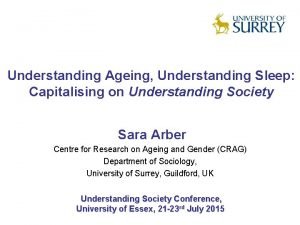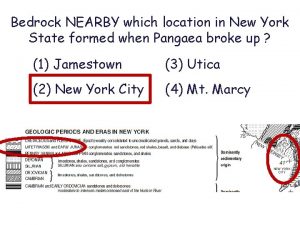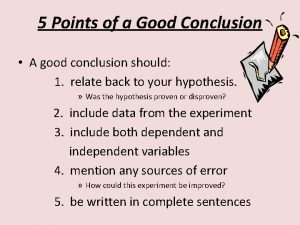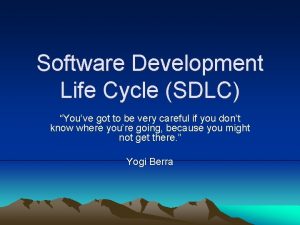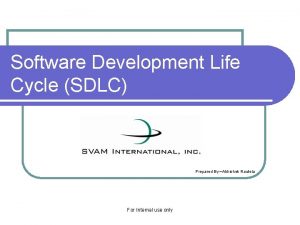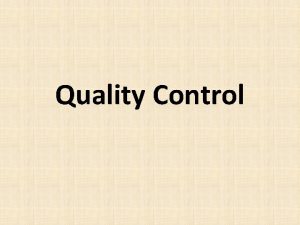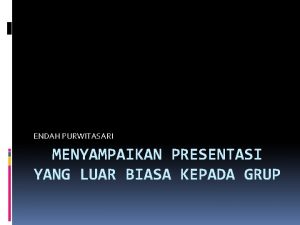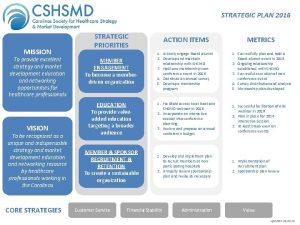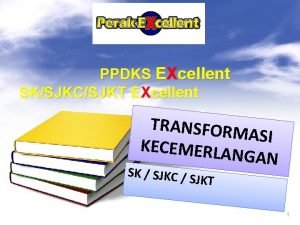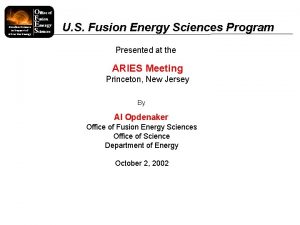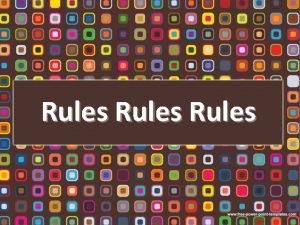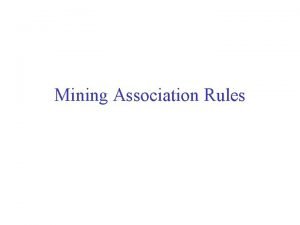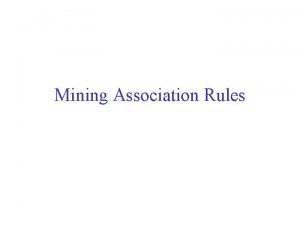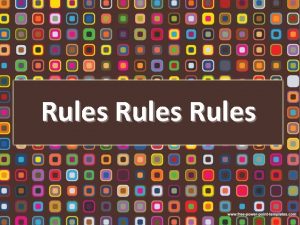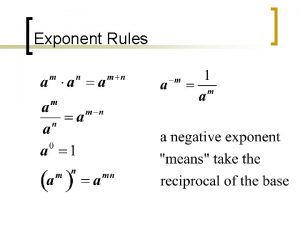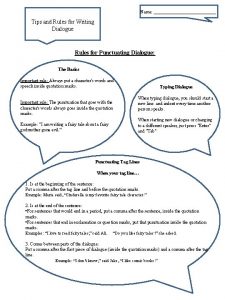Prof Rickus Rules of Writing An Excellent Writing















- Slides: 15

Prof Rickus’ Rules of Writing An Excellent Writing Reference: “The Elements of Style” 4 th Edition Strunk and White Also Check out … “The Grammar Trap” http: //www. agriculture. purdue. edu/agcomm/ontarget/grammartrap/

The Key: Knowing and Capturing your Audience!! n Consider your reader with every word n You must keep their attention n This means clear language and clear organization! n n n You must walk them through your thought process with logical steps You must not talk down to them You must not talk over them. This will impress no one!

1. Simple Sentences o NO Run-on Sentences o One Subject Noun – One Verb o Avoid unusual words. n You will not impress anyone by forcing them to use a dictionary to understand your paper.

2. Paragraphs o ONE main point per paragraph!! o Write a topic sentence for each paragraph o helps to provide a clear organization o Avoids reader confusion o If your reader is confused he/she will stop reading!

3. Document Organization o Have a logical organization and flow o Use Headers (for longer papers) n n n this is an easy way to direct your reader in technical papers the reader is more likely to jump around you will also have a high percentage of “skimmers”

4. Use Active Voice!! o Passive voice n n n o “A new method is being developed …” vague. who is developing it? The noun that is doing the action is missing Active Voice n n “A research team at Purdue University is developing a new method …” The reader doesn’t have to guess

5. Ambiguous use of “This” o Avoid n n n o “This detected the antigen. ” This what? This refers back to the proceeding sentence, but often it is ambiguous what you intend to refer to. Too vague! Does not clearly communicate what you want to say Keeps the reader guessing If the reader has to guess, he/she slows down If the reader slow down, the reader looses interest Instead try n “This antibody detected the antigen. ”

6. Avoid Extraneous Words o Avoid n n o “The fact that” “It is believed that” “We feel that” “It is clear that” Reasoning n n n These phrases do not add content or value. More words for you reader to read without value. Again slows down the reader

7. Abbreviations o o Always spell out abbreviations and acronyms the first time you use them “Biological engineering (BE) is a growing discipline at Purdue. BE is fun. BE is cool” Do not overuse Exceptions. Don’t have to spell out a few where the acronym or abbreviation is ubiquitous n n e. g. DNA Another example: IBM vs. International Business Machines Corp. Just use IBM. More people know the acronym compared to the full name.

8. Citations & References o o Use citation software such as endnote if you are writing a longer paper with numerous citations Better to use Author Date i. e. (Rickus et al 2005) citation unless the publisher or instructor specifically asks for number citations n o o Easier for reader For multiple citations in one place, order them in chronological order with oldest first. Try to use original references (if you can get or understand them) rather than only review articles

9. Avoid switching tense o o o try to stick with one tense (present, past etc). don’t switch around especially in one sentence or paragraph. it is very distracting and slows down the reader.

10. However o However is a “conjunctive adverb” meaning it joins words together If you are using “however” in this way, it means “nevertheless”. For this use, avoid placing it at the beginning of the sentence. n Avoid. I am disappointed. However, I will not deduct points. n Try: I am disappointed; however, I will not deduct points. n Note here it requires a semicolon because it is joining two complete phrases (each have a noun and a verb) n Don’t think of “however” as a replacement for “but” Correct: I like chocolate, but it has too many calories. Incorrect: I like chocolate, however, it has too many calories. n o When however is used at the beginning of a sentence it really means “in which ever way”. n n “However I choose to play the game, I will not win. ” So avoid using “however” at the beginning of a sentence if you really mean “nevertheless”.

11. Few Other Common Mistakes o It versus It’s n n It’s is a contraction of It is Its is possessive

12. Which versus that o “That” is defining n n n o The amino acid in the sequence that is hydrophobic. Tells you the specific amino acid that you are pointing out No comma with “that” “Which” adds information n n Isoleucine, which is hydrophobic, is in position 29. Which requires a comma before it!

13. genes versus protein o genes: lower case italicized n o proteins: capitalized and no italics n o period or per Period or Per or PER The per gene codes for the Period protein.
 How much is 100 grams
How much is 100 grams Excellent very good good fair poor scale
Excellent very good good fair poor scale Great is thy name oh lord
Great is thy name oh lord Volcanic ash
Volcanic ash Situation where you provided excellent customer service
Situation where you provided excellent customer service Chresteuomai
Chresteuomai Love is the more excellent way
Love is the more excellent way Good ways to conclude an essay
Good ways to conclude an essay Dsdm models
Dsdm models Slc software life cycle
Slc software life cycle From great to excellent
From great to excellent Excellent product quality
Excellent product quality Excellent enviro
Excellent enviro Excellent presentation
Excellent presentation Excellent strategy
Excellent strategy Bri-steel manufacturing
Bri-steel manufacturing

